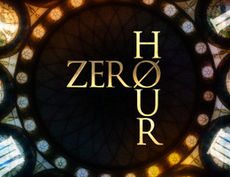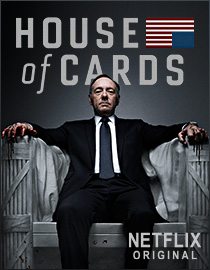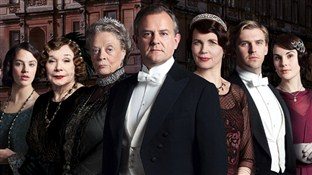
Zero Hour: 8 P.M. Thursdays, ABC
Normally when I’m reviewing a new show, if I find that the show is uneven, or even if I’m displeased with it, I can find a reason that a show could grow into a solid sustainable B-tier show. This is one of those rare occasions where I wonder how exactly this pilot made it to television (especially since the show that it replaced, Last Resort seemed pretty decent).
Zero Hour follows a magazine editor named Hank Galliston (as played by Anthony Edwards of ER Fame) whose wife is kidnapped by international terrorist “White Vincent”. Laila was kidnapped because she bought a clock with an ancient treasure map hidden inside, but inexplicably when she’s kidnapped she has already left the clock in a different location. Everything changes when an FBI agent who lost a close family member due to the actions of White Vincent shows up and starts pestering Hank, leading Hank to believe that he is wrapped up in something way beyond the kidnapping of his wife.
The show is full of confusing incongruities. The introductory sequence sets us in 1938, and sets us up by not exposing anything about either the treasure or any of the characters in the story, only that clocks exist, they’re the closest thing to god, the Nazis created a devil baby, that there’s something buried in Germany that could bring about the apocalypse. 40 minutes later, we finally learn that the 12 new men were meant to be the apostles and stop the end of the world after two young journalists inexplicably acquire the funds to go to Germany to talk to the maker of these clocks.
The acting as a whole is hammy and overdone. Whether it’s the priest whose advocating baiting out a terrorist by giving him what he wants, Anthony Edwards desperately trying to convince you that his wife is not young enough to be his daughter, or the FBI agents’ rush talking, almost everything in the show seems well past the point of belief. They use heavy accents in monologues but a scene in Germany is full of characters who speak in perfect American and British accents. Even star Anthony Edwards is not immune to this, as he plays Hank as hyper-rational, even in the face of the events that have just occurred.
The writing seems excessively convoluted and contrived. Hank is written to be as smart as if not smarter than the FBI. The terrorist “White Vincent” is written to be omniscient since we are meant to believe that a sole actor can divert Hank across Brooklyn, while tracking down a diamond smaller than an earring hidden covertly in an Altoids Case while remaining two steps ahead of the federal government who is crawling all over Brooklyn looking for him. Similarly, we are led to believe that Laila is kidnapped from a clock shop, when she dropped the clock off at her house? Why follow Laila to a second spot when he could have just broken into the house and taken the clock after she left?
Zero Hour seems to want to take a lot from the The Da Vinci Code, but unlike the movie, at no point do you feel like the dots are connected as you lead to a big reveal. Instead Zero Hour expects to take wild leaps of faith in order to appreciate it’s mythos of clocks, crazy terrorists, devil babies, young journalists with never ending pocketbooks (spoiler: the day I can get $5,000 out of the Manhattan Digest budget to fly to Germany to chase down someone who seems old enough to be dead and browbeat him for information, I totally will), FBI agents who don’t look 40 taking 40 year old incidents personally, and omniscient terrorists who can do more to avoid triangulation with Skype than most hackers, and the possibility that Hank is a reincarnated version of himself from Nazi-era Germany.
The Final Verdict: Any show like this requires some degree of suspension of disbelief, and when a show manages to shake my ability to suspend disbelief not even 90 seconds into a show, that’s a bad sign. What then occurs over the next 40 minutes involves the most ridiculous and ludicrous set of plot twists that one can find. It might be worth a watch if you want to see how a B-movie conspiracy film makes it to TV, but otherwise you’re probably better off watching Community or Parks and Recreation in that 8 p.m. Thursday time slot. I can’t see this one going much longer than 13 episodes, if only because nothing here makes sense and it doesn’t bottom out enough to make it watchable if only for the train wreck factor.


























